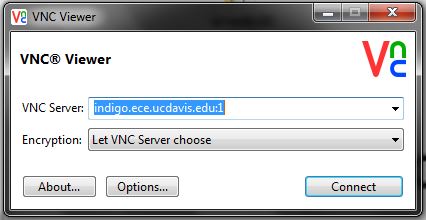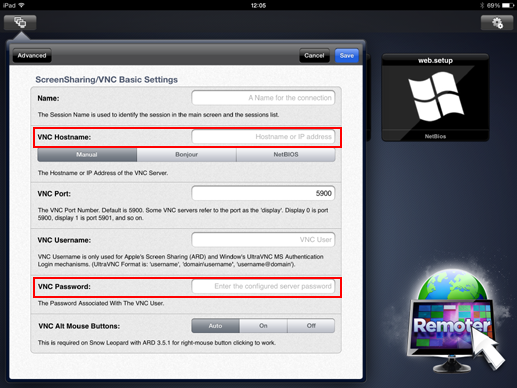

- #Vnc connect to current session mac os x#
- #Vnc connect to current session password#
- #Vnc connect to current session windows#
#Vnc connect to current session mac os x#
TurboVNC’s Solaris, Linux, and Mac OS X viewer supports image compression types JPEG or None (RGB). This functionality enables you to reconfigure visual quality and performance on-the-fly.įIGURE B-3 TurboVNC’s Configuration Dialog (Defaults for High Quality Are Shown) You can also press the F8 key after connecting to pop-up a menu (see FIGURE B-3) from which you can select a different connection profile. You can use the -lowqual and -medqual command-line options of vncviewer to switch to the Low Quality or Medium Quality profile, respectively. In the Solaris, Linux, and Mac OS X TurboVNC Viewer, the High Quality profile is the default.
#Vnc connect to current session windows#
This functionality enables you to reconfigure visual quality and performance attributes on-the-fly.įIGURE B-2 TurboVNC Viewer Options Dialog on a Windows Client Or, after connecting to the server, click on the Connection Options button in the toolbar to obtain the same dialog.

Click this dialog’s Options button to select the Image delivery and other attributes, as shown in FIGURE B-2.
#Vnc connect to current session password#
The default is to allow any user who correctly enters your VNC password to view your session. Similar to previous scenario, but do not allow others to view or share your session. Note the single colon, as is standard for an X display name. TABLE B-2 Common TurboVNC Viewer ScenariosĬonnect to the VNC server session running on machine host that has an X display number of display. TABLE B-2 describes different scenarios for starting a TurboVNC viewer from a command line. The TurboVNC connection profiles are further described in TurboVNC Connection Profiles and Dynamic Quality and Performance Tradeoff A small GUI (shown in TurboVNC Connection Dialog on a Windows Client) appears to allow selection of a Connection profile. On a Windows host, start a TurboVNC viewer by selecting TurboVNC Viewer in the TurboVNC Start Menu group. The TurboVNC server attempts to use operating system specific techniques to launch the user’s most recently used window manager. If the file does not exist, the TurboVNC server creates one. Upon startup, the TurboVNC server uses $HOME/.vnc/xstartup if the file exists. TurboVNC sessions can only be killed by the user that started the session.

Kill the TurboVNC session of X display number display. Lists all the TurboVNC sessions of the current user on this host. Where the desktop is w x h pixels in size. Start a TurboVNC session with a given virtual desktop size. The X display number of a TurboVNC session is printed out whenever you start the session. Start a TurboVNC session with default settings. TABLE B-1 Common TurboVNC Server Scenarios TABLE B-1 describes different scenarios for the TurboVNC server, the vncserver command, and respective comments. Common TurboVNC Scenarios TurboVNC Server Scenarios


 0 kommentar(er)
0 kommentar(er)
